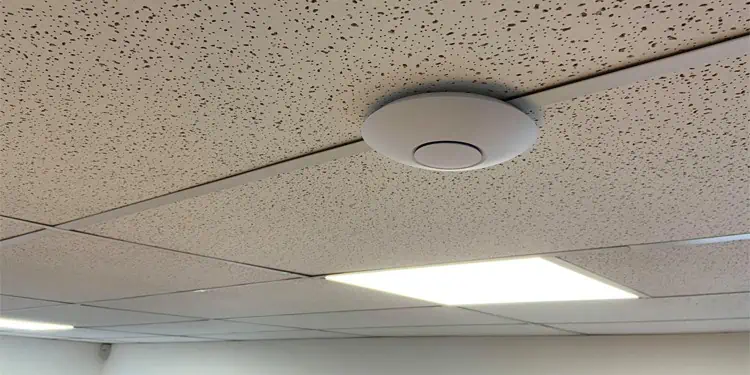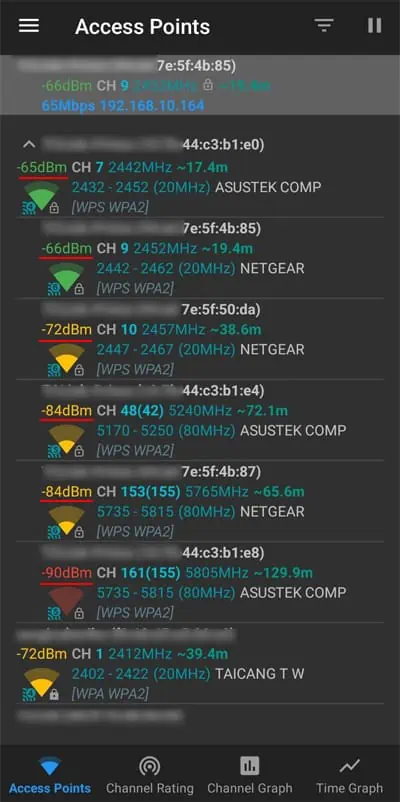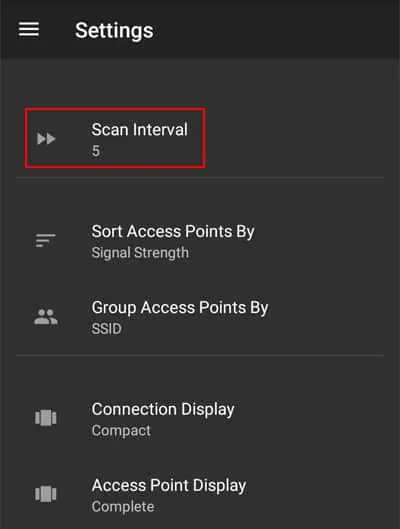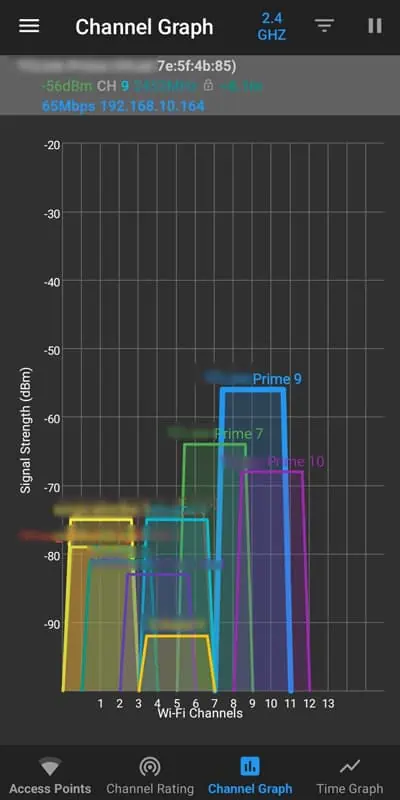It is not rare for people to set up an Access Point (AP) and then forget about its location. It is especially true in an office where there may be many access points hidden out of sight. Another possible scenario is that someone could set up a rogue access point with malicious intentions, and you wish to remove it.
In all these cases, you will need to locate the access point. Usually, offices keep an inventory of the access points along with their location so that they can keep track of them. So, first, you should try looking if your office has such documentation.
However, it is also possible that you don’t have access to such documents, or they don’t exist at all. In such cases, the only way to locate the APs so is by using spectrum or Wi-Fi analyzing programs, like WiFi Analyzer or directional antennas.
Use Wi-Fi Analyzing Apps
Wi-Fi signals get weak as you move farther from the access point and stronger as you come nearer. You can use signal strength analyzing apps that use this property to locate the approximate location of the access point.
Here’s how you can locate the access point using the Wi-Fi Analyzing app.
- Install a WiFi analyzing app on your mobile phone or laptop.
- Open it and get to the relevant Wi-Fi network name or SSID.
- Try turning off all the access points on the network you have already located first.
- Then, check the signal strength of the remaining access points and decide one access point to locate first. The signal strength is a negative value, so keep in mind that something like -60 dBm is lower than -40 dBm.

- The human body contains a lot of water (45-75%) which can weaken the WiFi signals. So place the device close to your body, just below your chest, to obstruct the Wi-Fi signal coming from behind.
- Stay in the location and orientation for a few seconds until the signal strength of the access point becomes stable.
- Rotate your body a little bit so that you are facing in another direction.
- Stay like that for a few seconds and check the strength again.
- Do so for all directions to find the direction that shows the highest signal strength.
- You can also decrease the Scan Interval to quicken the search process.

- Move a little bit toward that direction and perform the same process. Proceed to do so until you find that the strength gets to the maximum possible value. It shouldn’t change much, even when you face different directions. Also, keep the following things in mind:
- Usually, the signal strength will not go above -10 dBm on 2.4 GHz, -20 dBm on 5 GHz, and -30 dBm on 6GHz.

- Sometimes, other Wi-Fi devices or certain equipment like refrigerators, microwave ovens, etc., can interfere with the wireless signal of the access point. In such cases, the signal may appear lower than it should be.
- Physical obstructions like walls or other objects will also weaken the signal, so take those into account as well.
- If your body can’t weaken the signal, you will need to walk around in different directions to locate the area with the highest signal strength.
- Usually, the signal strength will not go above -10 dBm on 2.4 GHz, -20 dBm on 5 GHz, and -30 dBm on 6GHz.
- Check the location with the highest signal strength for the access point device. Make sure to check hidden places, like inside the ceiling panels.
- The access point may be on a different floor, so you need to check those as well.
- Do the same process for all the access points you need to locate.
Using a Wi-Fi analyzer is not an effective method if you need to locate an access point in a big office or building. These usually have a large area or multiple floors and a high number of access points.
The best way to locate the access points in such cases is by using specific software to create a Wi-Fi heatmap and locate all the access points in the map.
Use Wi-Fi Heatmaps
Wi-Fi heatmaps are great tools to check Wi-Fi coverage and the signal strength of all locations in an office or a building. Some heatmap or network visualization software also comes with integrated algorithms that help calculate the location of access points based on the network layout on the heatmap.
Usually, large offices create Wi-Fi heatmaps that contain their office layout and the location of the access points. If such maps exist, you can easily locate all the access points in the building.
However, it is also possible to create a heatmap afterward. You will need to survey the building and create a blueprint, including all its floors, using any method on a new heatmap project.
Then, you need to use Wi-Fi tracking and analyzing applications to check the signal strength in multiple locations and input the data into the heatmap.
Other Alternatives
Locating a Wi-Fi access point is a difficult task in an indoor environment that contains many walls and other objects that can obstruct and reflect the Wi-Fi signal.
So, you can also use specialized equipment like directional antennas, if possible. The process is the same, but you will have better accuracy as it can easily point to the direction the signal is coming from. So you won’t need to move around too much to locate the access points.
Other than that, some devices like WiFi Pineapple are also available on the market. These are usually used for penetration tests to check the security of your network or by hackers to create a backdoor. But you can also use it to shut down unwanted or rogue access points.



